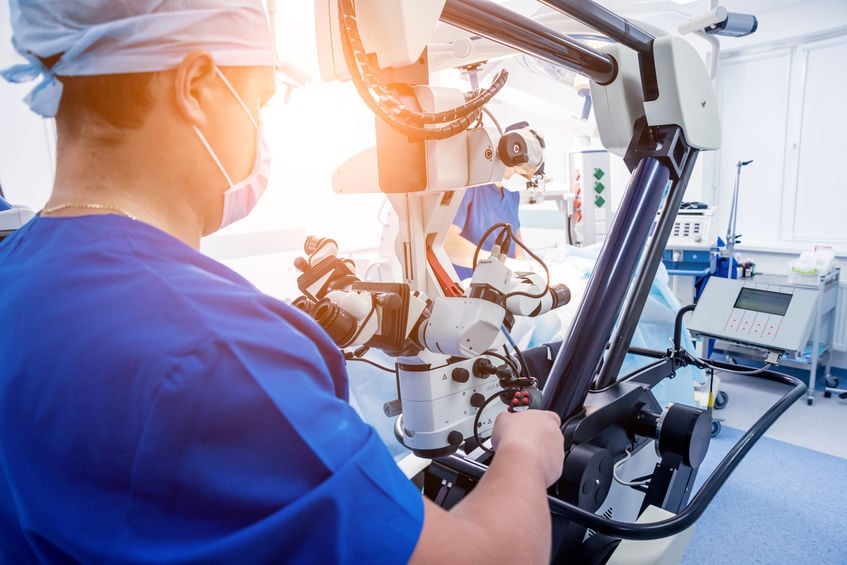Shoulder Mobility Matters
The shoulder is a complex ball and socket joint that allows the arm to move through different motions. From reaching for the top shelf at the grocery store to throwing a ball, the shoulder plays a pivotal role in daily movements. When shoulder mobility is compromised due to a rotator cuff injury, even the simplest tasks can seem difficult. If left untreated, the shoulder loses strength and function. Any individual with severe shoulder instability due to a compromised rotator cuff may benefit from outpatient surgery.

The role of the rotator cuff
Essential for stabilizing and facilitating the lifting and movement of the shoulder joint, the rotator cuff refers to a group of 4 muscles and tendons that work harmoniously to ensure controlled shoulder motion. The rotator cuff also attaches the humerus bone to the shoulder and secures the socket. The role in shoulder function is akin to a finely tuned orchestra. Each muscle and tendon have a specific part to play in orchestrating the symphony of movements that allow a person to perform tasks ranging from lifting objects to reaching for items overhead.
Making sense of shoulder injuries
Rotator cuff injuries are often caused by damage to the tendons that wrap around and secure the shoulder. Injuries can include strains, shoulder impingements, ligament tears, or inflammation of the bursa or tendons. Overuse, aging, traumatic injuries, and degeneration over time are other common culprits. Understanding the underlying cause of the injury is crucial in determining the appropriate course of treatment. Pain, weakness, and limited range of motion (ROM) are common symptoms of a rotator cuff injury. Diagnostic tools such as scans and physical examinations help healthcare providers pinpoint the extent of the injury.
The surgical procedure
A rotator cuff injury does not automatically mean surgery. However, when treating the condition conservatively fails, surgery can help. Arthroscopic and open surgery are the 2 primary approaches for rotator cuff surgery. Arthroscopic surgery involves smaller incisions and is minimally invasive, while open surgery requires a larger incision. Anesthesia will be administered during surgery to ensure the patient is comfortable and pain-free. The surgeon will make the necessary incisions to access the damaged rotator cuff. The bulk of the surgery involves repairing the torn or damaged rotator cuff tendons, often using sutures to reattach the tendon to the bone. The goal is to restore stability and function to the shoulder joint.
Recovery and rehabilitation
The first step in recovery is a focus on pain management, which begins immediately after surgery. Medications and physical therapy (PT) are crucial components of this phase. Physical therapists will guide individuals through a tailored rehabilitation program to gradually restore strength and mobility to the shoulder. Understanding the recovery timeline is vital. While results vary from person to person, individuals should expect several months of dedicated rehabilitation to regain full mobility.
Expected improvements in ROM
Many people undergoing rotator cuff surgery anticipate a substantial improvement in the shoulder's ROM and functionality. A repair enables patients to perform daily tasks and engage in physical activities more quickly. Improved mobility after surgery often reduces pain and discomfort, enhancing the overall quality of life for individuals who have struggled with shoulder issues.
Regaining quality of life
Beyond the physical benefits, numerous individuals undergoing successful rotator cuff surgery experience profound improvement in overall quality of life. Most individuals can now engage in previously challenging or restricted activities with greater ease and comfort. The enhanced quality of life often results from reduced pain, improved sleep, and a newfound sense of independence, all of which contribute to a more fulfilling and enjoyable daily existence.
Improved mobility is possible
Rotator cuff surgery can improve mobility, especially for individuals with chronic pain and limited range of motion. The minimally invasive nature of arthroscopy allows a faster return to normal activities with less pain and discomfort. Consultation with an experienced orthopedic surgeon is advisable to assess the situation and determine the most appropriate treatment plan. Individuals can enjoy a more mobile and pain-free life with the right approach and commitment to rehabilitation.
More Articles from MVSC
April 15, 2024
Spinal surgery is an excellent solution for lower back pain, but symptoms can return. With lifestyle changes, patients can get the most out of fusion.
January 15, 2024
Spinal conditions in the lower back may require a procedure called laminectomy. With MIS, patients have higher success rates.
December 21, 2023
Clavicle fractures are often treated non-surgically. The location and degree of damage can indicate whether collarbone surgery is needed.
December 7, 2023
Technology has played a major role in MIS procedures. Robotic lumbar spine surgery is faster, more accurate, and highly successful.







